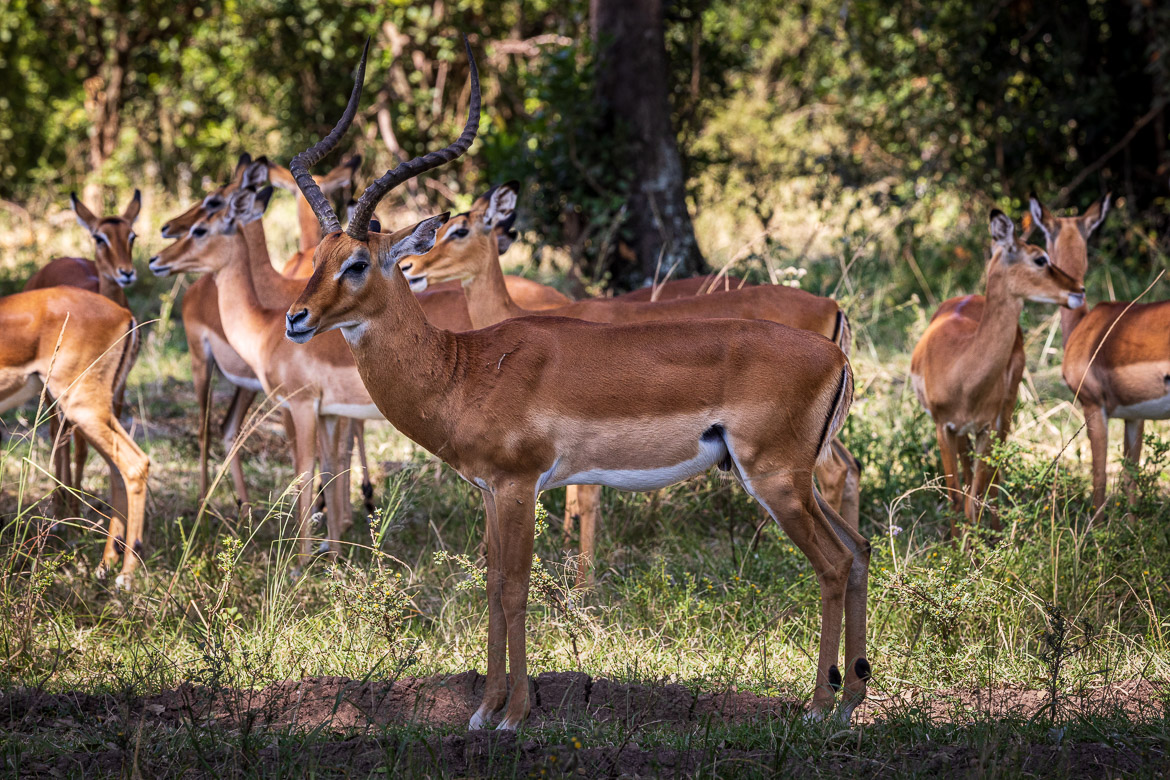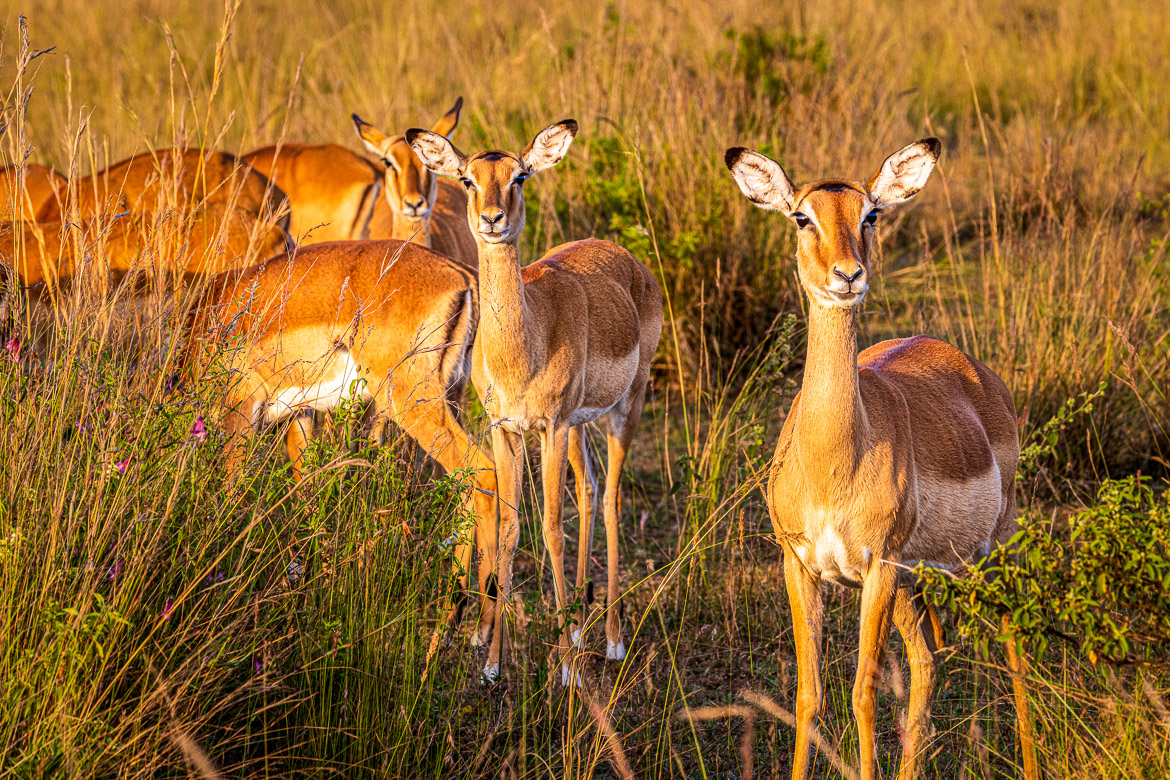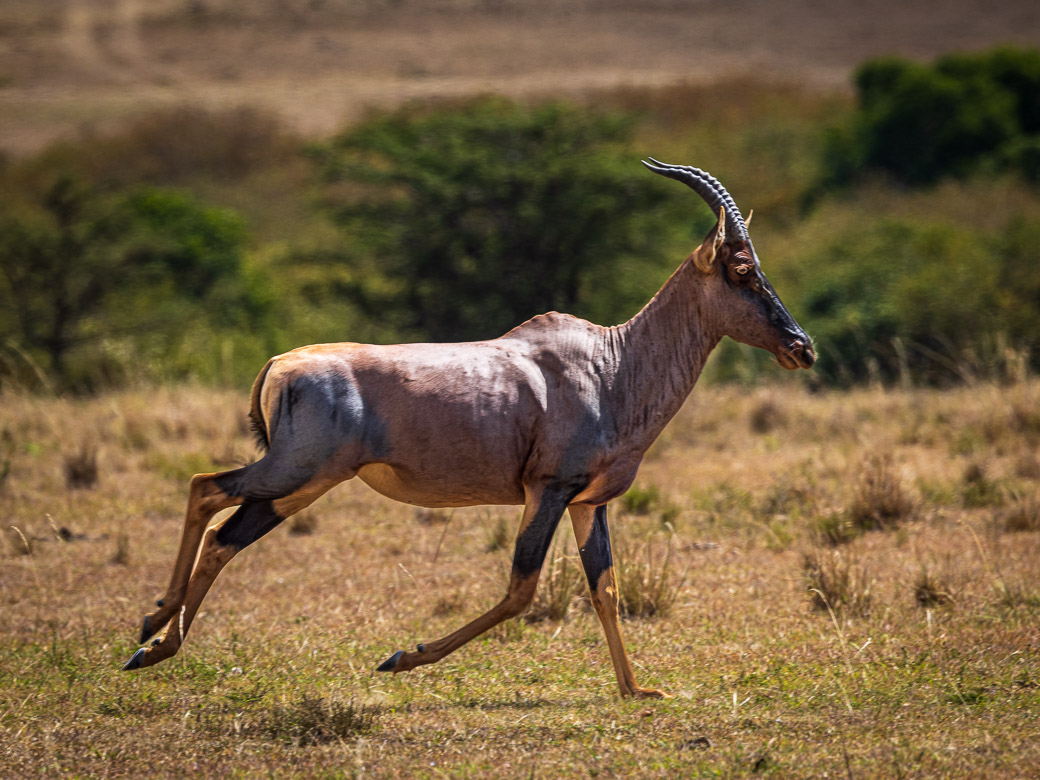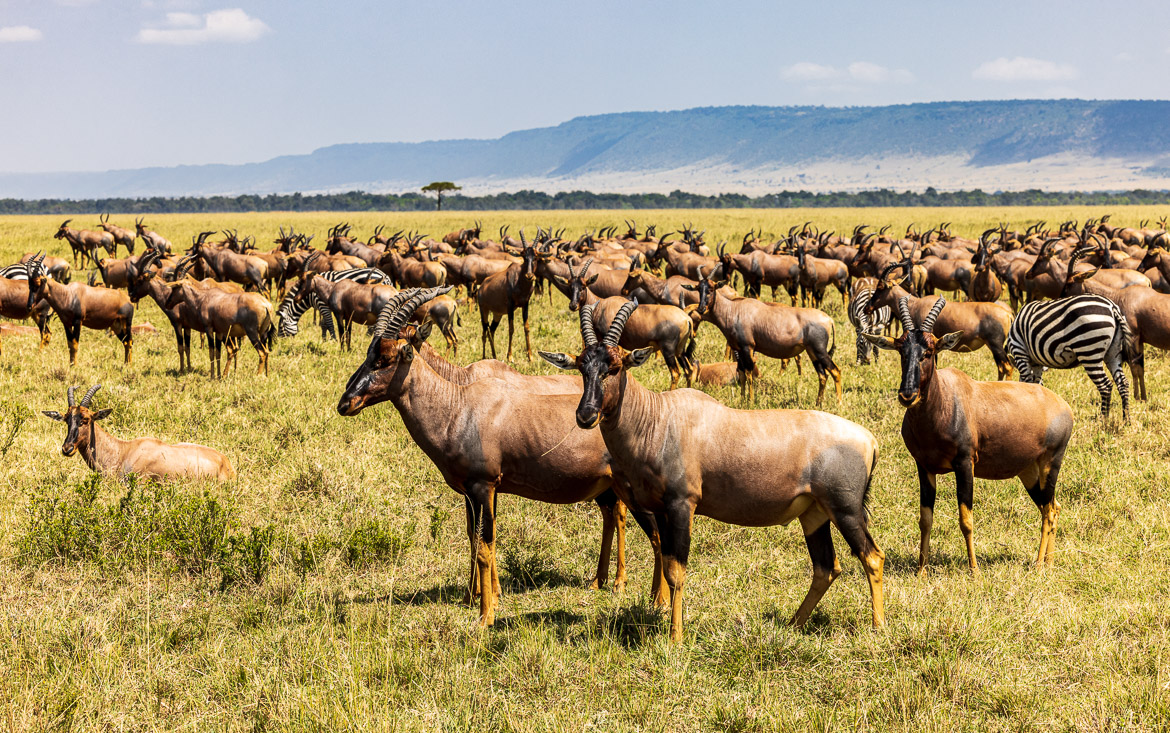
Antelopes comprise a wastebasket taxon defined as any of numerous Old World grazing and browsing hoofed mammals. There are more than 90 different types of antelopes. Some are very small as I have shown in earlier published images of die-dik, some can be very large. They are all moving graciously. Antelope horns grow continuously through their life, whereas a deer will shed its horns annually and then starting anew.
More species of antelope are native to Africa than any other continent. They live almost exclusively in savannah. Below here I show a few of the different antelopes that we have seen. Some where in the earlier posts from northern Kenya as well.
Topi
Topi is a large or medium sized antelope, 100 – 130 cm tall. They are very social and live in large herds (see the image at the top of this post).
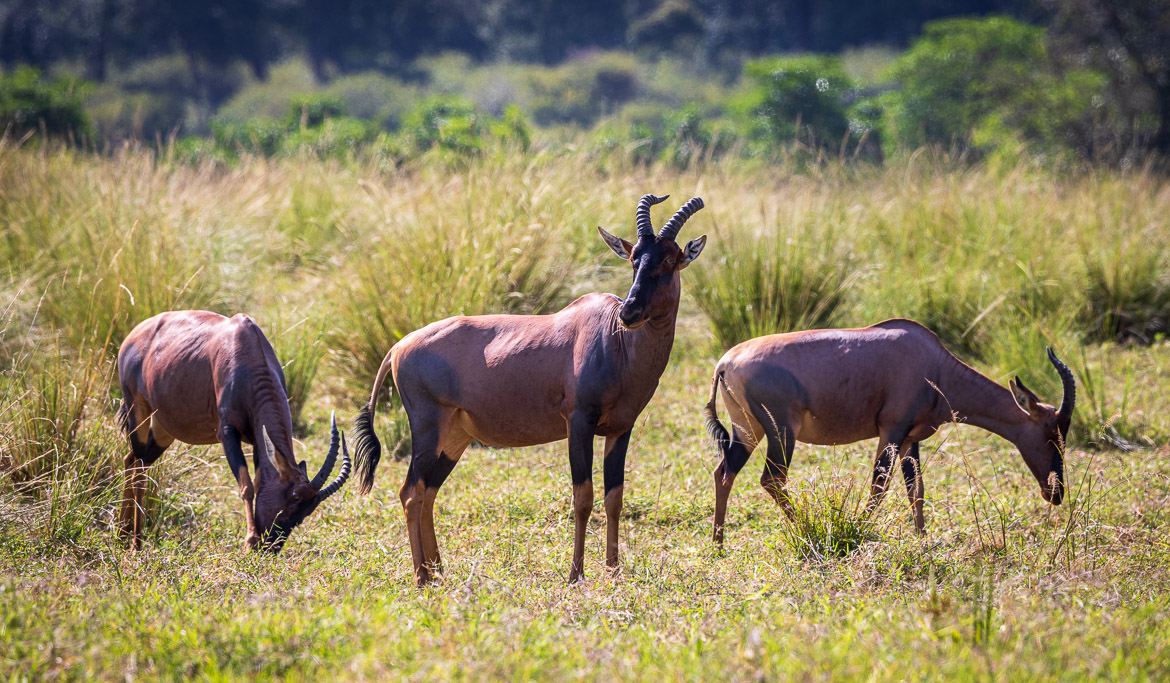
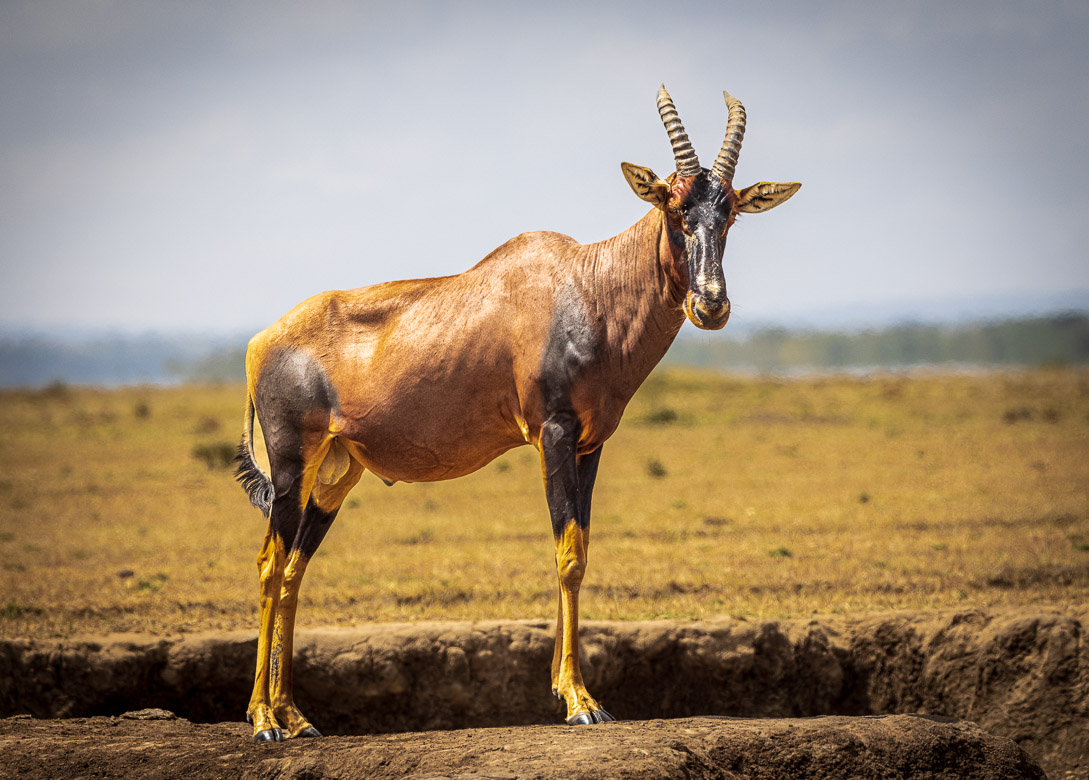
We saw a few lions basking in the sun in the middle of the day (2 pm). They spotted the topis and went after them. Some of the other animals were watching but they were not overly afraid. In the image below I have marked two impalas at the top right of the picture (you will need a large computer screen to see them clearly) and two zebras at the bottom right. They are all observing the lions but don’t run away. The photo is captured with a strong tele lens (500 mm), which compresses the image, so the actual distances from the lions to the impalas and zebras are longer than they appear in the photo.
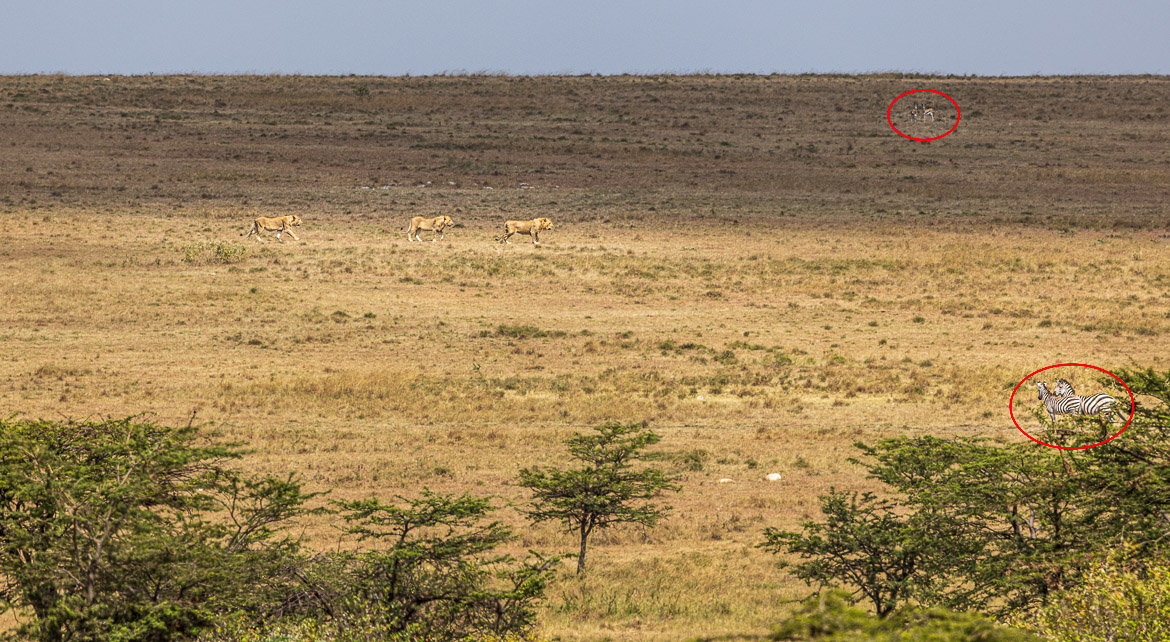
But the topi closest to the lions started running for all he was worth, while we were driving beside following his flight from the lions. He got away and I got some lovely photos of the topi running. I have made a slide show of five of those photos. You can just click on the arrow to advance the slide show.
Hartebeest
Hartebeests live like topis in large herds. They can weigh anything from 75 to 200 kg. Below is a lonely one which is beautiful in the setting sun.
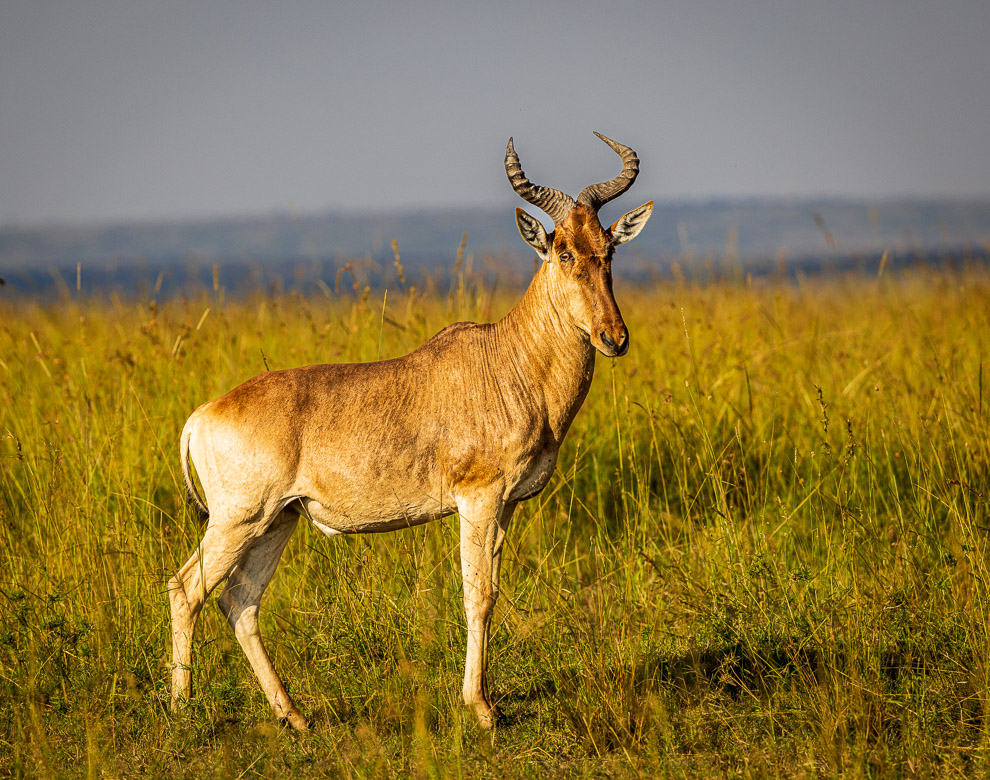
Waterbuck
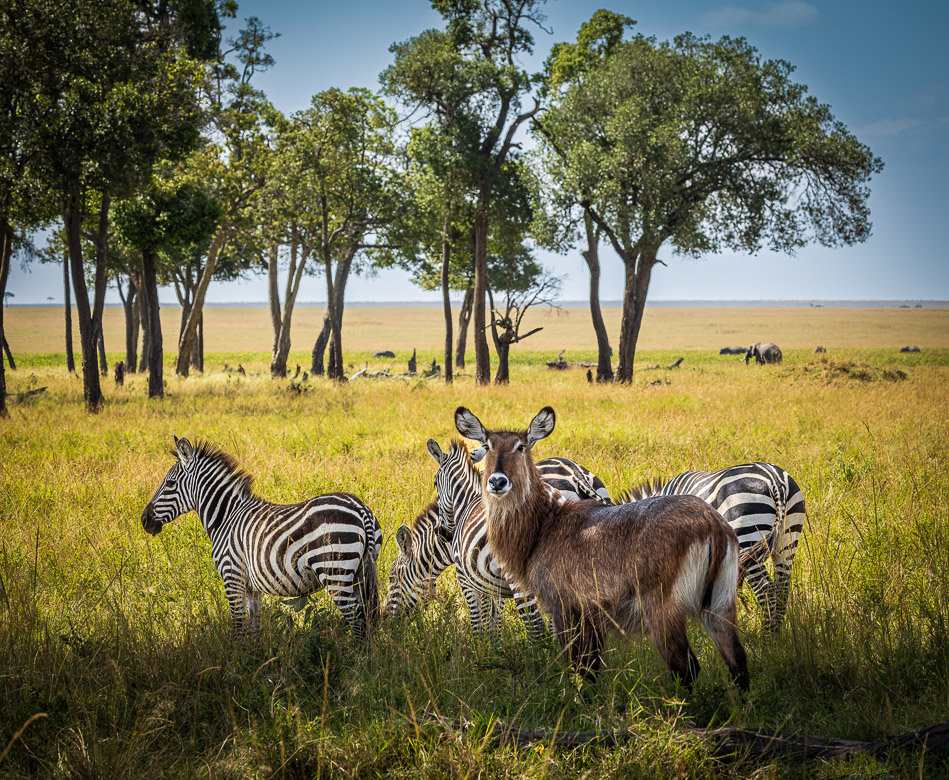
Bongo
Bongos are forest animals seldom seen in large groups. They are mostly nocturnal. Having said that my photo is captured in the open plains in the middle of the day. They are characterised by their white stripes along their body on their otherwise reddish-brown coat.
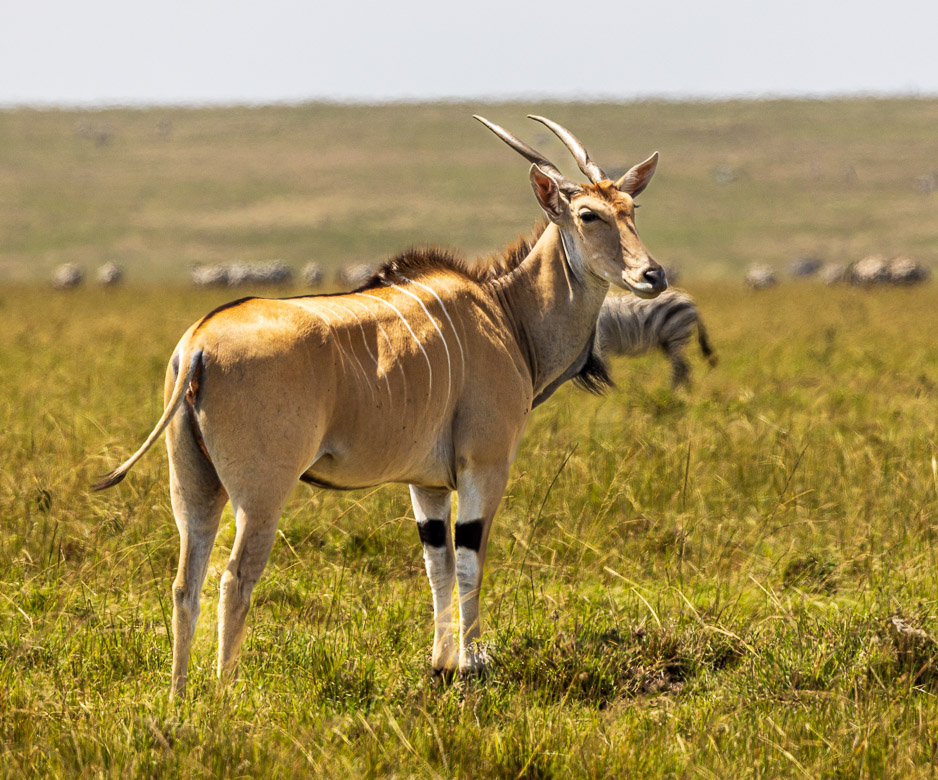
Zebra
The zebras also appeared in large herds (although not as large as the topis) and we saw they often mingling with other species, as you have seen in some of my earlier images in this post.
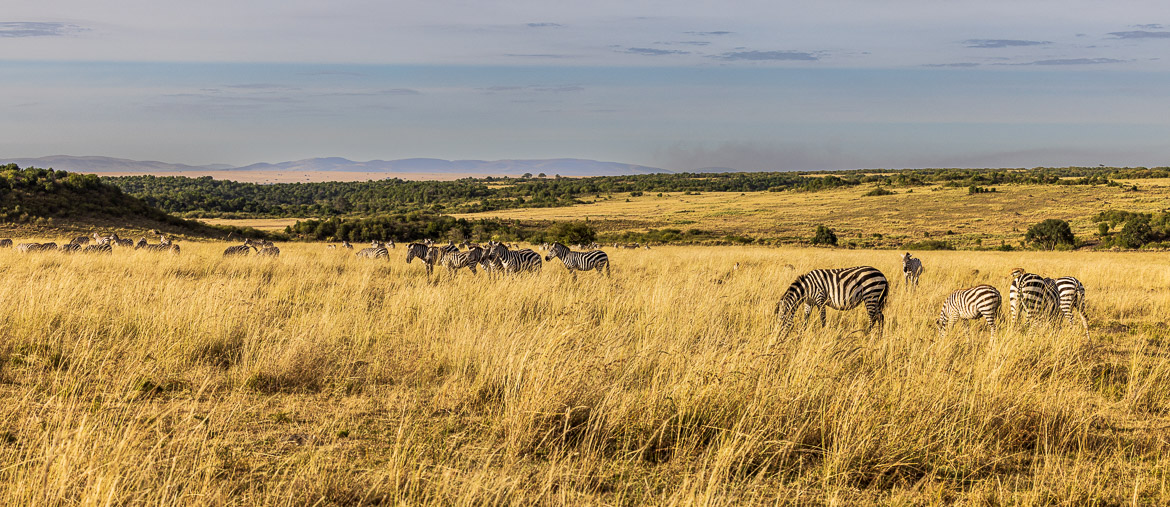
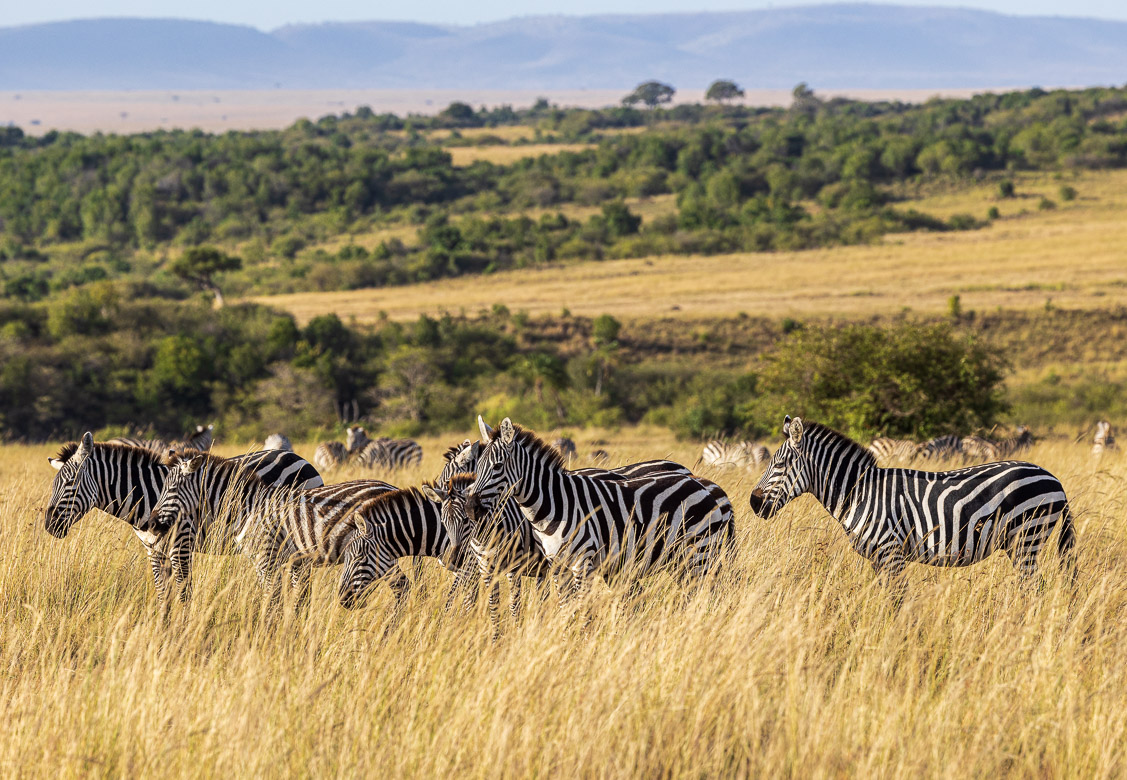
The images below are from another herd of zebras. These two were very friendly and seemed to have a good time together, laughing and enjoying life to the fullest.
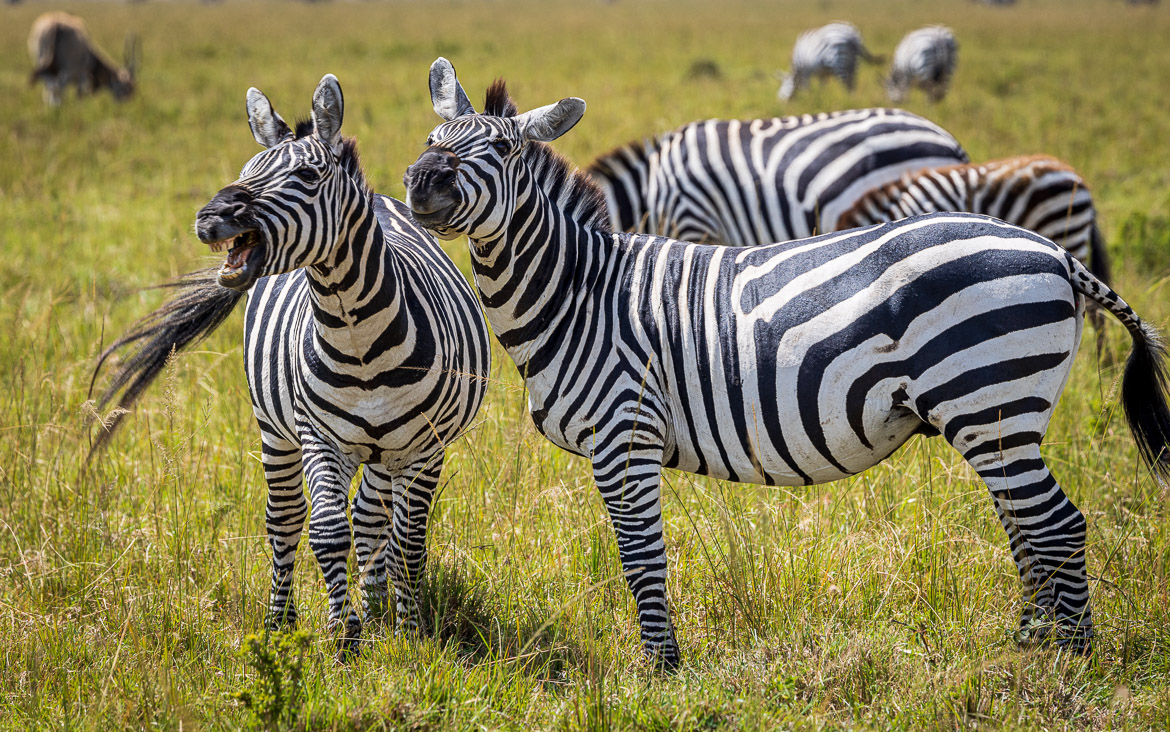
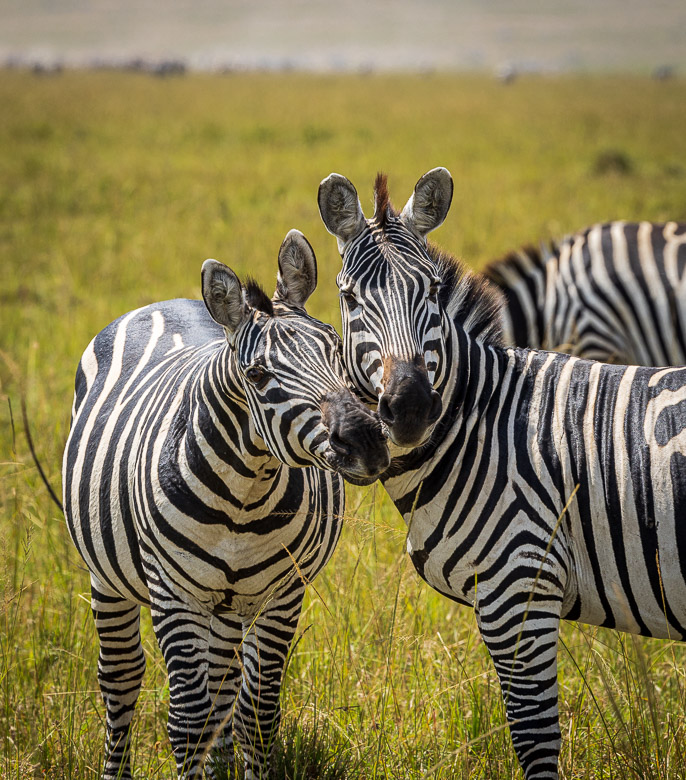
Impala
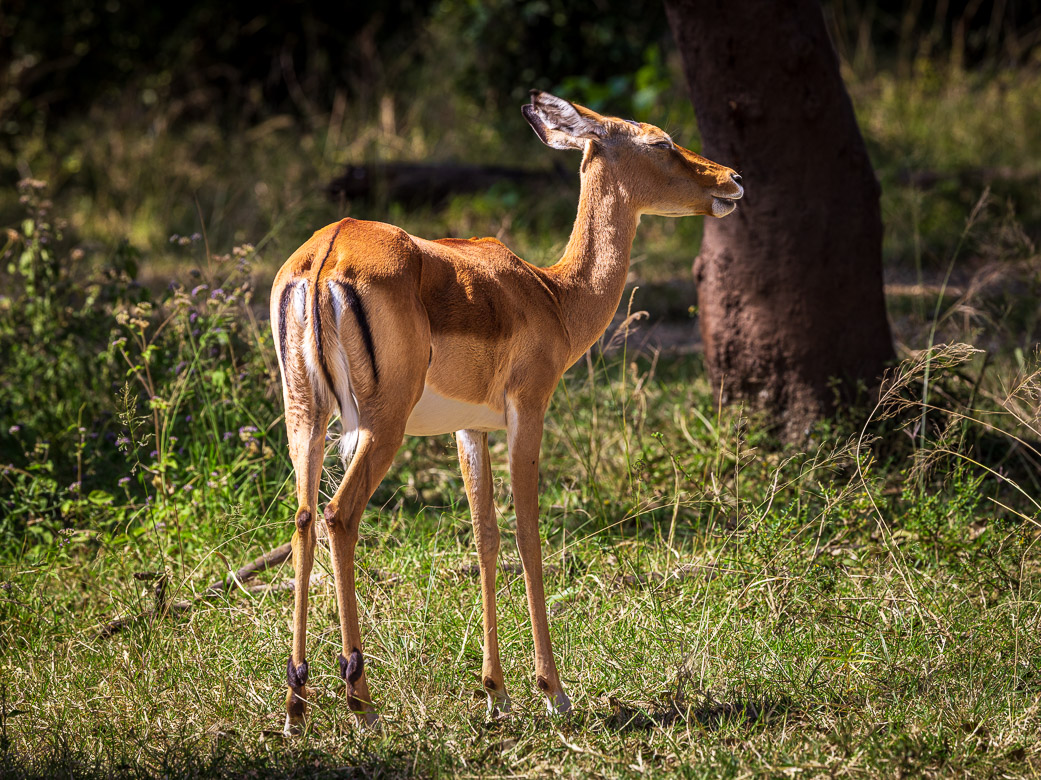
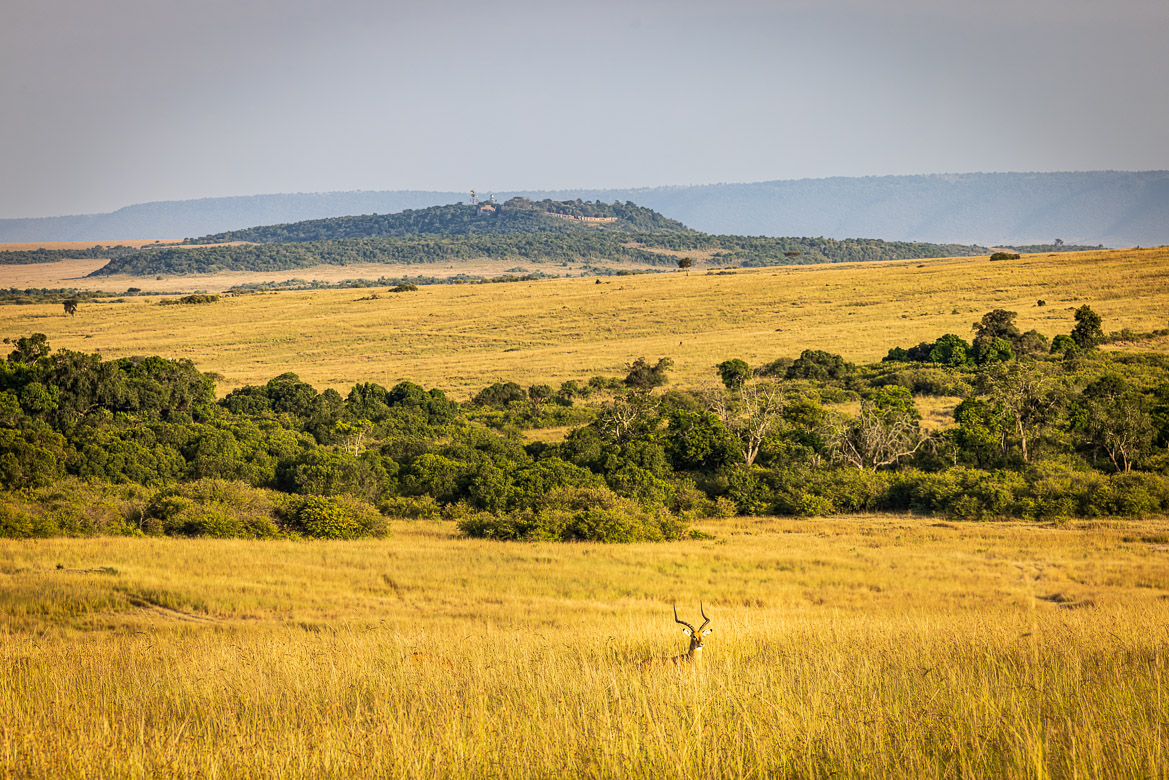
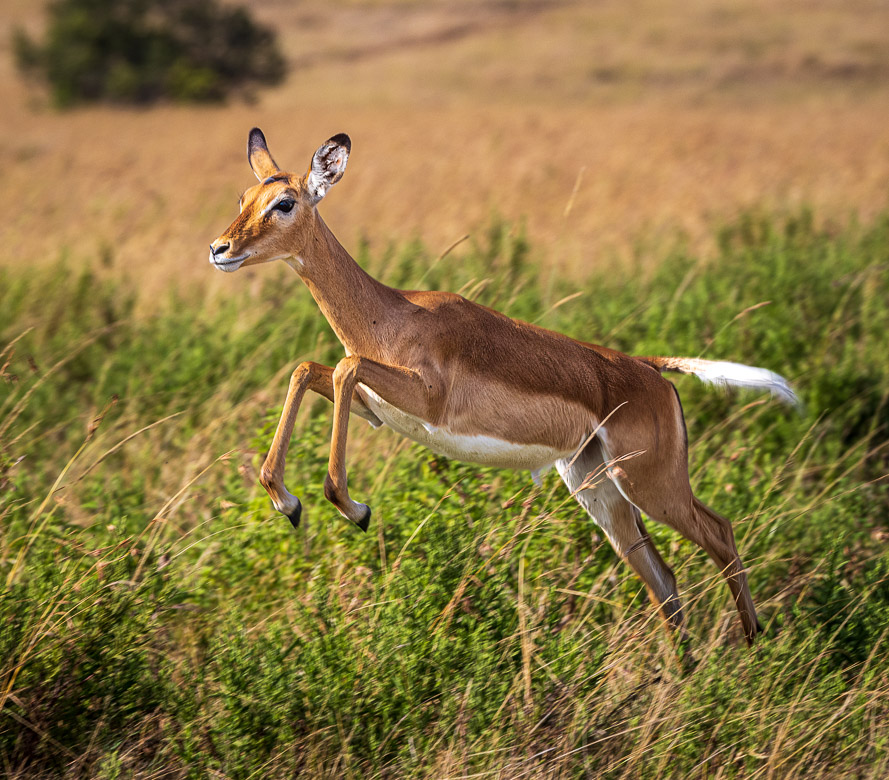
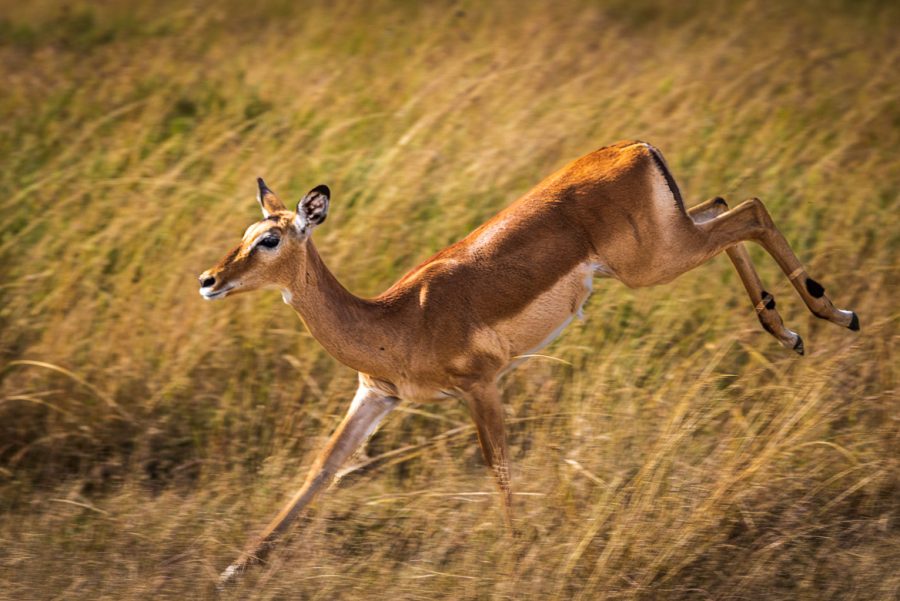
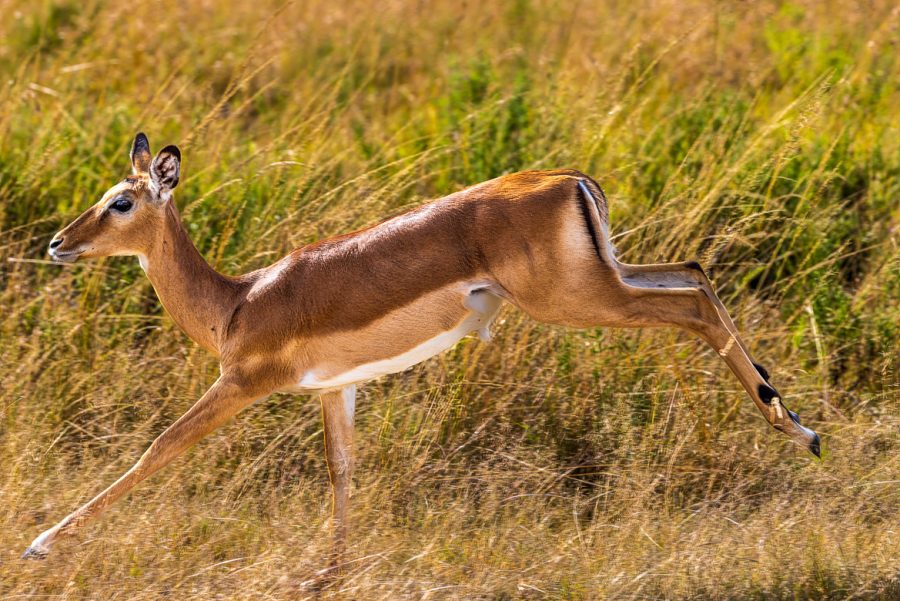
The most gracious of all the antelopes are the impalas. They also appear in large herds and we saw them both in Samburu and here in Masai Mara.
